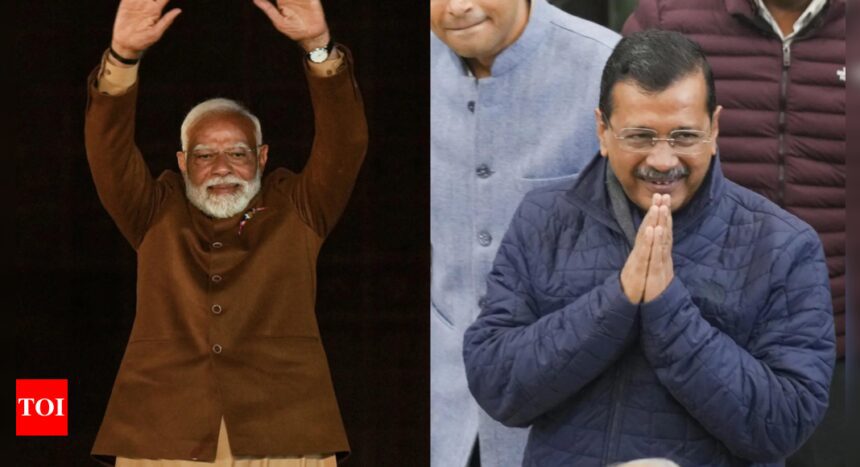Delhi’s elections, though among the smallest in the world’s largest democracy, delivered significant political signals on Saturday.
Firstly, after losing its sheen post-Lok Sabha elections, the BJP has rejuvenated itself, with Modi emerging once again as a formidable political force and a highly marketable brand.
Secondly, Rahul Gandhi appears to have reverted to his previous state, reminiscent of the time before Congress secured 99 seats in Lok Sabha polls—nothing he says or does seems to influence electoral outcomes.
Thirdly, for now at least, Arvind Kejriwal’s status as a major player in the national opposition has taken a considerable hit. It is rare for a political brand to suffer such a significant blow as he did after the results from Delhi.
Fourthly, the opposition alliance is crumbling.
Fifthly, the recent election result illustrates that in urban regions, it is not enough to rely solely on freebies, as shown by Delhi voters punishing AAP for poor infrastructure.
In the national capital, the atmosphere felt like one era was closing and another was starting. The BJP reclaimed power after 27 years, while AAP was ousted after a decade. Kejriwal will not serve as Delhi’s Chief Minister again, and neither will Atishi. Now, all eyes are on whom Modi and Shah will choose as the BJP’s Chief Minister.
The last time the BJP was elected in Delhi was in 1993; back then, Yamuna still supported aquatic life, Appu Ghar was the city’s top attraction, and the Delhi Metro was a distant vision, all while the air quality was far better. A city that has drastically changed, both positively and negatively, rendered a verdict equally remarkable.
The sense of remarkable transformation was intensified by Kejriwal’s loss in the New Delhi seat. His defeat by 4,089 votes to Parvesh Verma, the son of former BJP Chief Minister Sahib Singh Verma, in a constituency he had previously won by over 21,000 votes in 2020, capped a dismal day for AAP officials.
Examining how votes were distributed in Delhi reveals some intriguing insights. BJP won 48 seats in the 70-seat assembly, supported by a 45.6% vote share. In contrast, AAP’s 22-seat win, which was less than half of the BJP’s count, came with a substantial 43.6% vote share.
The fact that a mere 2-percentage point difference in vote share could dramatically alter the outcome reveals five key insights.
Firstly, this marks the first instance where a party with over 40% of the vote share in Delhi has lost an election. Secondly, the 10-percentage point drop in AAP’s vote share from 2020 to 2025 did not significantly affect its appeal among low-income voters.
Thirdly, it indicates that middle-class Delhi voters shifted their support away from AAP, which was crucial in determining the results.
Fourthly, the middle-class grievances against AAP centered on the party’s apparent disregard for infrastructure issues, a resentment AAP either underestimated or overlooked.
Lastly, the rivalry between AAP and Congress, compounded by their decision to contest separately and stage a bitter campaign against one another, played a pivotal role in the final outcome.
Analyzing the election result by sub-regions within Delhi reveals the extent of the BJP’s victory. Their success came predominantly from outer Delhi areas adjacent to Haryana in the north and west, as well as New Delhi and East Delhi. The BJP secured nine out of ten seats in the West Delhi parliamentary constituency, eight each in the North West and East Delhi, and seven in New Delhi. In contrast, during the 2020 elections, the BJP did not win any seats in West Delhi and New Delhi, managing only one in North West Delhi. They also captured six seats in the Chandni Chowk Lok Sabha area, where they had previously been unrepresented.
Additionally, the BJP made significant advances into Dalit-majority regions, winning four of the 12 reserved SC constituencies. This success culminated in the party’s victory in the Muslim-dominated Mustafabad constituency, thanks to a competitive four-way contest.










